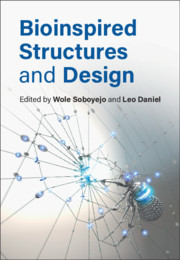Book contents
- Bioinspired Structures and Design
- Bioinspired Structures and Design
- Copyright page
- Contents
- Contributors
- Preface
- Part I Materials
- Part II Structures
- Part III Natural Phenomena
- 10 Aquatic Animals Operating at High Reynolds Numbers
- 11 Flying of Insects
- 12 Designing Nature-Inspired Liquid-Repellent Surfaces
- 13 Biomimetic and Soft Robotics
- 14 Bioinspired Building Envelopes
- Index
- References
12 - Designing Nature-Inspired Liquid-Repellent Surfaces
from Part III - Natural Phenomena
Published online by Cambridge University Press: 28 August 2020
- Bioinspired Structures and Design
- Bioinspired Structures and Design
- Copyright page
- Contents
- Contributors
- Preface
- Part I Materials
- Part II Structures
- Part III Natural Phenomena
- 10 Aquatic Animals Operating at High Reynolds Numbers
- 11 Flying of Insects
- 12 Designing Nature-Inspired Liquid-Repellent Surfaces
- 13 Biomimetic and Soft Robotics
- 14 Bioinspired Building Envelopes
- Index
- References
Summary
Wetting refers to the interactions between a liquid and a solid in a given environment [1–3]. In particular, it refers to the study of how liquids spread on solids. This field of science involves principles found in fluid mechanics and materials science and is relevant to various natural phenomena and industrial applications.
- Type
- Chapter
- Information
- Bioinspired Structures and Design , pp. 300 - 319Publisher: Cambridge University PressPrint publication year: 2020
References
- 1
- Cited by



